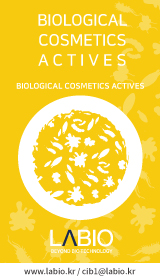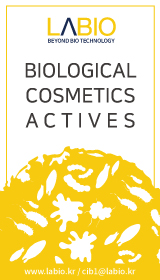Since June of last year, the Korea Cosmetics Association has formed a public-private consultative body for regulatory innovation with the participation of experts from the Ministry of Food and Drug Safety, related institutions, and academia, and as the first step for a new leap forward for K-beauty, global standardization and currentization of regulations related to the cosmetics industry carried out activities for
Through six months of consultative body activities, the details of the innovation targets were greatly changed under the premise of △ conversion to a global negative system for fostering innovative and creative brands △ introduction of the K-beauty global safety management system △ establishment of a global standard quality management system. derived
The basic requirement and the biggest challenge for such regulatory innovation is that the current cosmetics law must be 'completely revised' to the level of 'newly enacted'. This not only has to go through the process of proposing a revision (proposal) and passing it in the plenary session of the National Assembly, but also needs to leave open the possibility that the initially intended direction and purpose may change in the process.
Regardless of future schedules, Cosmorning reviews the regulatory innovation tasks and directions presented by the Cosmetics Association through discussions with the Ministry of Food and Drug Safety for each issue and publishes detailed plans for them in series. The first part is about the introduction and operation plan of 'Cosmetics Advertising Autonomous Dispute Settlement Organization' (tentative name), and the second part follows the previous part. <Editor's Note>

Necessity to ease burden and responsibility of Ministry of Food and Drug Safety
It is also worth pointing out the excessive consumption of administrative power in the handling of complaints about cosmetic advertisements, which are estimated to be between 10,000 and 12,000 per year.
Currently, the Ministry of Food and Drug Safety presents examples of general prohibited expressions for cosmetics labeling and advertising, and the 'Cosmetics Labeling and Advertising Management Guidelines', which describes the Ministry of Food and Drug Safety's point of view and interpretation of the detailed standards for the main subjects of cosmetics labeling and advertising. based on dispute resolution.
Despite the efforts and performance of the Ministry of Food and Drug Safety, the argument that it is reasonable to let the private sector, not the administrative agency, arbitrate advertisement-related disputes between cosmetic companies is based on the following grounds.
First, the number of complaints related to advertisements is expected to continue to increase due to the increase in cosmetics businesses and intensifying competition among business operators. In order for the Ministry of Food and Drug Safety to handle such complaints, the number of public officials in charge must also continue to increase in line with the increasing number of complaints, so unnecessary waste of administrative power is inevitable.
Second, when dealing with advertisement-related disputes, the government (ministry in charge) will prioritize 'solving disputes and preventing recurrence' rather than 'guaranteeing freedom of commercial expression'.
This makes it possible to expect that the number of prohibited expressions stipulated in the cosmetics labeling and advertisement management guidelines will gradually increase over time.
From a short-term point of view, the current system is effective in terms of resolving disputes, but from a long-term perspective, it can get stuck in the area of restrictions on advertising autonomy and creativity, which are protected by the constitutional freedom of expression and freedom of occupation.
Third, the meaning of 'other indications or advertisements that may mislead consumers or mislead consumers', which is an act prohibited by Article 13, Paragraph 1, Item 4 of the Cosmetics Act, is ambiguous, making it difficult to determine whether or not it is violated. point out that it is difficult.
In this case, it is judged that 'mediation', which helps a third party in a neutral position to resolve the dispute by itself through negotiations with the consent of the parties to the dispute, can be a more effective dispute resolution method.
Fourth, advertising-related regulations in foreign countries such as the US, UK, and Japan also encourage the advertising industry to conduct autonomous and fair advertising activities while keeping government intervention to a minimum. Advertising is a measure that not only provides information to consumers, but also promotes the interests of advertisers and further promotes the country's economic growth.
Fifth, the best way to improve advertising creativity and autonomy and prevent unnecessary consumption of administrative power is to resolve disputes related to cosmetic advertisements by private mediation first and for the government to intervene only when absolutely necessary in consideration of the seriousness of the issue. can be called a method.
Subject to Mediation of the Autonomous Advertising Dispute Mediation Organization
The subject of mediation by the autonomous advertising dispute mediation organization is 'disputes related to cosmetics advertisements'. It is expected that most of the applicants filing complaints related to cosmetics advertisements will be cosmetics manufacturers and responsible sellers. This is because it is difficult to imagine a case in which general consumers are dissatisfied with the expression of cosmetic advertisements and file complaints.
Most of the complaints filed by consumers against companies are related to compensation for damages caused by side effects of cosmetics, and are subject to mediation by the Consumer Dispute Mediation Committee based on Article 60 of the Framework Act on Consumers, not the Autonomous Advertising Dispute Mediation Organization.
Therefore, by introducing an autonomous advertising dispute resolution organization as part of the transition to regulatory innovation and private-led growth system, a fair market competition environment is established by strengthening the self-adjustment function of disputes between companies without significantly affecting the rights and obligations of general consumers. Going one step further, it is expected that it will help protect consumer rights and interests.
Unlike the United States, it is currently difficult to find a purely private group dispute resolution institution in Korea. Although the autonomous advertising dispute mediation body is a private group-type dispute resolution institution that is unfamiliar under the Korean legislation, the work of this mediation body is mainly aimed at mediating disputes between 'businesses' related to cosmetics advertisements, and interests between companies, not ordinary consumers. It is worth paying attention to the judgment that it can be harmonized with the existing system without major problems in terms of coordinating the
Introduction of an autonomous advertising dispute resolution organization
'ADR' (Alternative Dispute Resolution) refers to the settlement of disputes without resorting to trial according to the legal process, and can be collectively referred to as 'alternative dispute resolution system'.
ADR is a resolution that utilizes the autonomy of the parties to the dispute, a non-disclosed solution that protects privacy, a solution that is simple, quick, and economically feasible, a solution that utilizes experts in various fields, and a solution that is appropriate to the situation regardless of the existence of rights and obligations. etc. is possible.
Furthermore, it has the advantage of reducing the burden of cases in the courts, and is known as a method that is currently being actively operated in countries around the world.
ADR is divided into judicial type operated by the court, administrative type operated by government agencies, and private type operated by the private sector according to the operator.
Since the purpose of introducing an autonomous advertising dispute resolution organization is that 'disputes between companies are first resolved by themselves' and to prevent unnecessary consumption of administrative power due to accusatory civil complaints, the operating body of an autonomous advertising dispute resolution organization should be a private sector. There can be no disagreement about doing that.
Therefore, the best way is to resolve disputes through a self-regulatory organization between companies, such as the National Advertising Division (NAD) in the United States or the Advertising Standards Authority (ASA) in the United Kingdom.
However, in this case, there are limitations in that △ the disputing parties' lack of awareness of the private ADR system △ the distrust of the disputing parties in the representativeness of the business association and the neutrality of the dispute settlement body.
Therefore, intervention by the government (relevant ministries) seems inevitable at the level of supplementing the limits of fully autonomous dispute resolution. At this point, as for the level and method of government intervention, it is reasonable for the government to approve (approve) the representative of a business group, that is, a self-regulatory body, and have the self-regulatory body that has received this approval establish and operate a dispute mediation body. The conclusion is that.





